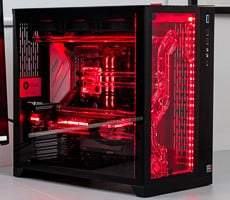Dell G7 15 Gaming Laptop Review: Affordable, Stylish, And Powerful
Dell's G7 15 Gaming shows the NVIDIA GeForce GTX 1060 Max-Q holding its own in synthetic benchmarks when pitted against similarly-equipped systems. Now let's have at look at how it performs in actual games, and specifically Rise of the Tomb Raider and Middle-Earth: Shadow of Mordor.
|

At the laptop's native 1920x1080 resolution, it mingles with other mobile systems powered by a full GeForce GTX 1060. This is another solid showing for both Dell and NVIDIA's Max-Q design. We should also note that the G7 is well into triple-digit framerate territory here—there's no need to lower the resolution for playable action.
|

Just as we saw in Shadow of Mordor, the GeForce GTX 1060 Max-Q did not hold the G7 back in Rise of the Tomb Raider, compared to other GeForce GTX 1060 laptops. It was just the opposite in fact, as it ran just a tad faster, seemingly benefiting from a performance boost from its 6-core Core i7-8750H processor inside. And once again, the G7 15 shows it is quite adept at gaming at its native 1920x1080 resolution.






